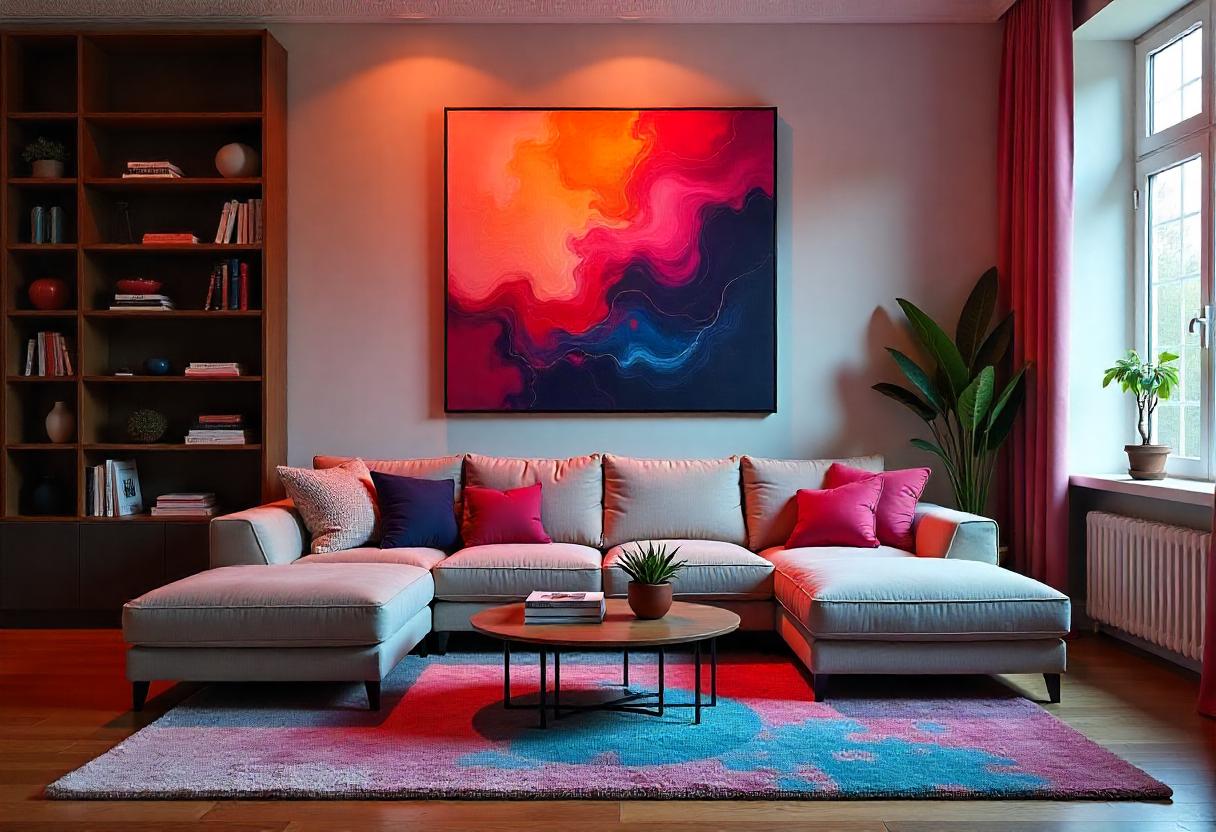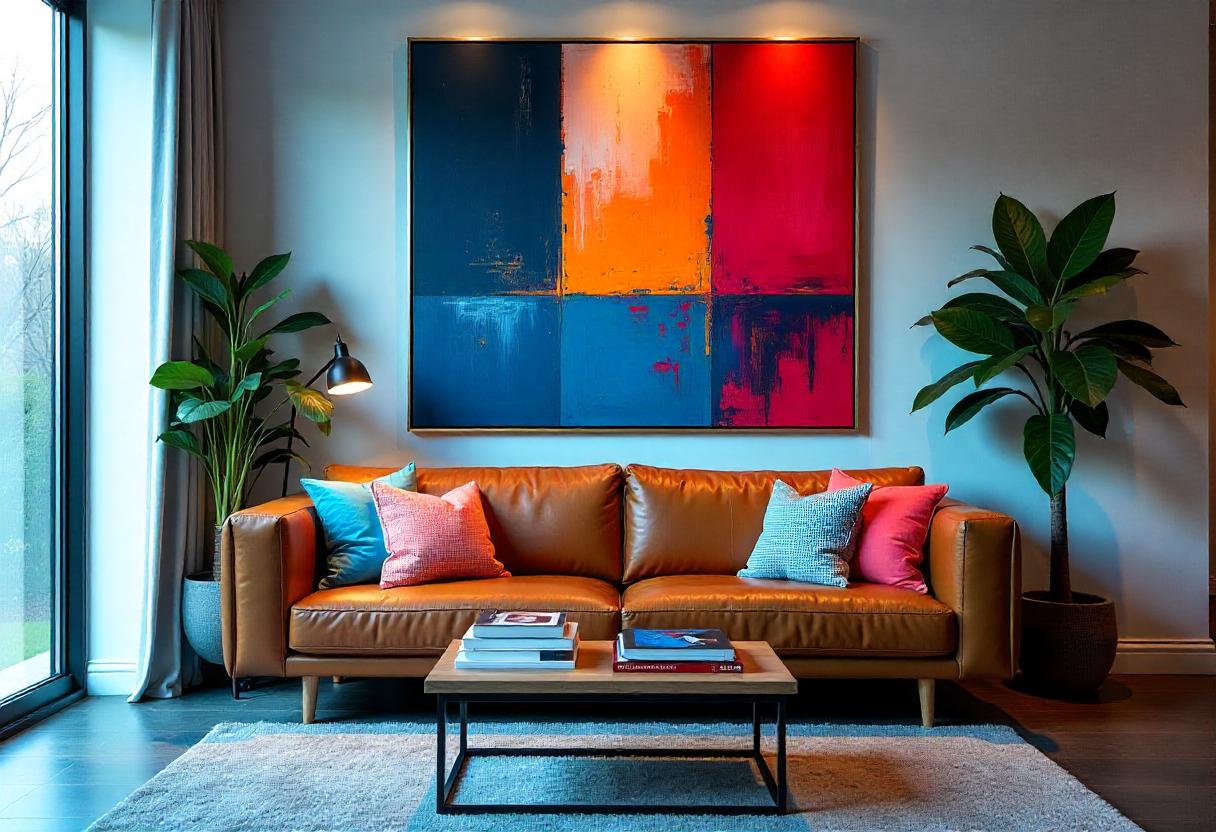The Ultimate Guide to Living Room Artwork
Introduction
The living room is often regarded as the heart of the home, a space where families gather, entertain guests, and create lasting memories. As such, it deserves careful consideration in terms of design and decor. One of the most impactful elements that can transform a living room is artwork. Living room artwork not only enhances the aesthetic appeal of the space but also reflects personal style and sets the mood for the environment. In this comprehensive guide, we will delve into the significance of living room artwork, explore various styles and types, and provide practical tips for selecting and displaying art that resonates with both architects and families.
Why Living Room Artwork Matters
1. Enhancing Aesthetics
Artwork serves as a focal point in any room, drawing attention and creating visual interest. A well-chosen piece can complement the color scheme, furniture, and overall design of the living room. Whether it’s a large canvas painting or a collection of smaller prints, artwork can elevate the aesthetic quality of the space.
2. Reflecting Personal Style
Living room artwork is an expression of individual taste and personality. It provides homeowners with an opportunity to showcase their interests, experiences, and values. From abstract pieces to landscapes, the choice of artwork can convey stories and emotions that resonate with family members and guests alike.
3. Setting the Mood
The type of artwork selected can significantly influence the atmosphere of a living room. Bold and vibrant pieces can energize a space, while softer, more subdued works can create a calming environment. Understanding how different styles of art evoke various feelings is crucial for creating the desired ambiance.
4. Creating Conversation Starters
Art has the unique ability to spark conversation. A striking piece can serve as an icebreaker during gatherings, encouraging guests to share their thoughts and interpretations. This interaction fosters connection and engagement among family members and visitors.
Types of Living Room Artwork
When it comes to selecting artwork for your living room, the options are virtually limitless. Here are some popular categories to consider:
1. Paintings
Paintings are perhaps the most traditional form of artwork found in living rooms. They come in various styles, including:
• Abstract: These pieces focus on colors, shapes, and forms rather than realistic representations. Abstract paintings can add a modern touch to your living space.
• Landscape: Landscape paintings depict natural scenes and can bring a sense of tranquility to your living room.
• Portraits: Portraits capture human figures and emotions, often adding a personal touch to the decor.
2. Prints
Art prints are reproductions of original artworks and offer an affordable way to incorporate art into your living room. They come in various styles, including:
• Photographic Prints: High-quality photographs can evoke powerful emotions and memories.
• Graphic Prints: These pieces often feature bold designs and typography, making them suitable for contemporary spaces.
3. Sculptures
Sculptures add a three-dimensional element to your living room decor. They can be made from various materials such as metal, wood, or stone. Consider placing sculptures on shelves, coffee tables, or pedestals to create visual interest.
4. Wall Murals
Wall murals are large-scale artworks that cover an entire wall or section of a room. They can dramatically alter the perception of space and are ideal for creating a statement in your living room.
5. Mixed Media Art
Mixed media art combines various materials and techniques, creating unique and textured pieces. This type of artwork can add depth and complexity to your living room decor.
How to Choose the Right Living Room Artwork
Selecting the perfect artwork for your living room involves careful consideration of several factors:
1. Define Your Style
Before you start shopping for artwork, take some time to define your style. Consider whether you prefer modern, traditional, eclectic, or minimalist designs. Your chosen style will guide you in selecting pieces that harmonize with your overall decor.
2. Consider Color Schemes
The color palette of your living room plays a crucial role in determining which artworks will complement the space. Choose artwork that either matches or contrasts with your existing colors to create visual balance.
3. Size Matters
The size of your artwork should be proportional to the dimensions of your living room and its furnishings. Large pieces work well as focal points on expansive walls, while smaller artworks can be grouped together to create an engaging gallery wall.
4. Think About Placement
Consider where you plan to display your artwork. High-traffic areas may require sturdier pieces, while more intimate spaces can accommodate delicate works. The height at which you hang artwork is also important; eye level is generally recommended for optimal viewing.
5. Personal Connection
Choose artwork that resonates with you on a personal level. Whether it’s a piece that reminds you of a cherished memory or one that inspires you daily, having a personal connection to your art will enhance your enjoyment of it.
Displaying Living Room Artwork
Once you’ve selected your artwork, it’s time to think about how to display it effectively:
1. Create a Focal Point
Choose one standout piece to serve as a focal point in your living room. This could be a large painting above the sofa or an eye-catching sculpture in a prominent location.
2. Gallery Walls
Gallery walls are an excellent way to display multiple pieces of art in an organized manner. Mix different sizes, styles, and frames for an eclectic look or stick to a cohesive theme for a more uniform appearance.
3. Use Proper Lighting
Lighting can significantly enhance the visual impact of your artwork. Consider using spotlights or picture lights to highlight specific pieces, or opt for ambient lighting that creates a warm glow throughout the room.
4. Incorporate Shelving
Floating shelves provide an opportunity to display smaller artworks or sculptures without committing to wall space. This allows for easy rearrangement and adds dimension to your decor.
5. Rotate Your Art
If you have a collection of artworks, consider rotating them periodically to keep your living room feeling fresh and dynamic. This approach allows you to enjoy different pieces throughout the year without needing to make new purchases.

The Role of Artwork in Interior Design
For architects and interior designers, understanding the role of artwork in interior design is essential for creating cohesive spaces:
1. Complementing Architectural Features
Artwork should enhance architectural features rather than compete with them. Consider how your chosen pieces interact with elements like windows, doorways, and built-in furniture.
2. Establishing Themes
Artwork can help establish themes within a living room design. For example, coastal-themed art can reinforce beach-inspired decor, while vintage pieces may complement retro furnishings.
3. Creating Flow
When designing open-concept spaces, consider how artwork can create flow between different areas. A consistent style or color palette across artworks in adjoining rooms can unify the overall design.
Sustainable Choices in Living Room Artwork
As sustainability becomes increasingly important in design practices, consider incorporating eco-friendly choices into your living room artwork selection:
1. Support Local Artists
Purchasing artwork from local artists not only supports the community but often results in unique pieces that reflect local culture and aesthetics.
2. Use Recycled Materials
Many artists create stunning works using recycled materials or found objects. These pieces not only look beautiful but also promote sustainability through creative reuse.
3. Invest in Quality Over Quantity
Opting for fewer high-quality pieces rather than numerous low-quality ones reduces waste and ensures that each artwork is cherished for years to come.
Conclusion
Living room artwork is more than just decoration; it plays a vital role in shaping the atmosphere and character of a home. By carefully selecting pieces that reflect personal style, harmonize with design elements, and create emotional connections, homeowners can elevate their living spaces into true reflections of themselves.
For architects and designers working with clients on their living rooms, understanding the significance of artwork can lead to more cohesive and impactful designs. By considering factors such as style, color schemes, size, placement, and sustainability, professionals can guide their clients toward making informed choices that enhance their homes.
Incorporating thoughtfully chosen artwork into living rooms not only beautifies the space but also fosters connection—between family members, friends, and even with oneself through personal expression. As you embark on this journey of curating living room artwork, remember that each piece tells a story; choose those that resonate with you and create an inviting atmosphere for all who enter your home.
—
This article serves as a comprehensive resource for architects and families looking to explore the world of living room artwork. By focusing on key considerations and practical tips, you can ensure that your living space reflects both functionality and beauty while making a lasting impression on all who visit.

I love how the article emphasizes the importance of choosing artwork that resonates personally. It really makes a space feel more inviting!
Great tips on mixing different art styles! I never thought about how well modern pieces could complement vintage decor.
The suggestion to consider the color palette of the room when selecting art is so helpful. I can’t wait to refresh my living room!